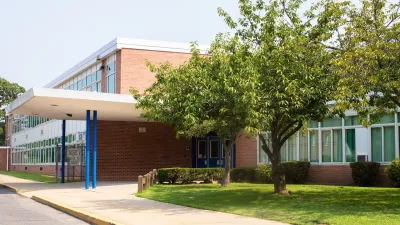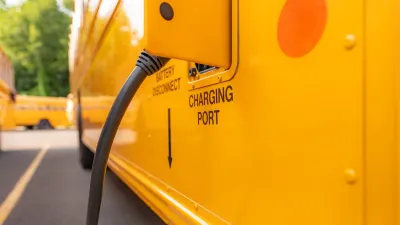The American Academy of Pediatrics has released a new report focusing on the effect of the built environment on children's health. Access to parks, the ability to walk to school, and opportunities for 'incidental exercise.'
From the introduction:
"Suburbanization and decisions about school siting are important determinants of why children now live so far from school. Historically, small neighborhood schools served as "anchors" within the community and places for after-school programs, for social and recreational gathering, and as disaster shelters.59 However, after the 1950s, many states established policies on the size and location of school buildings that influenced school siting. According to those guidelines, to receive state funding, schools had to have a minimum acreage (eg, elementary schools needed to be on at least 10 acres), and more students translated to larger required school-grounds size (eg, an extra acre for every 100 students). Because untapped acreage sufficient to meet these standards is most often at the edge of an urban area, neighborhood schools (typically only 2–8 acres in size) were frequently demolished or closed in favor of "big-box schools" at the outskirts of cities. Recommendations on school size from the Council of Education Facilities Planners International (CEFPI) were revised in 200461 and no longer recommend a minimum acreage. There is increasing interest in supporting smaller schools, but change to policies on school land size occurs slowly. It is also important to acknowledge that there may be some trade-offs to consider regarding school size and physical activity. There is some research suggesting that larger school campuses, buildings, and play areas may promote youth physical activity during the school day.
Distance is, of course, not the only barrier preventing children from walking or biking to school. A recent nationally representative study found that even among children who lived within 1 mile of school, less than half walk to school even 1 day/week."
FULL STORY: The Built Environment: Designing Communities to Promote Physical Activity in Children

Planetizen Federal Action Tracker
A weekly monitor of how Trump’s orders and actions are impacting planners and planning in America.

Congressman Proposes Bill to Rename DC Metro “Trump Train”
The Make Autorail Great Again Act would withhold federal funding to the system until the Washington Metropolitan Area Transit Authority (WMATA), rebrands as the Washington Metropolitan Authority for Greater Access (WMAGA).

DARTSpace Platform Streamlines Dallas TOD Application Process
The Dallas transit agency hopes a shorter permitting timeline will boost transit-oriented development around rail stations.

Renters Now Outnumber Homeowners in Over 200 US Suburbs
High housing costs in city centers and the new-found flexibility offered by remote work are pushing more renters to suburban areas.

The Tiny, Adorable $7,000 Car Turning Japan Onto EVs
The single seat Mibot charges from a regular plug in about as much time as an iPad, and is about half the price of an average EV.

Supreme Court Ruling in Pipeline Case Guts Federal Environmental Law
The decision limits the scope of a federal law that mandates extensive environmental impact reviews of energy, infrastructure, and transportation projects.
Urban Design for Planners 1: Software Tools
This six-course series explores essential urban design concepts using open source software and equips planners with the tools they need to participate fully in the urban design process.
Planning for Universal Design
Learn the tools for implementing Universal Design in planning regulations.
Roanoke Valley-Alleghany Regional Commission
City of Mt Shasta
City of Camden Redevelopment Agency
City of Astoria
Transportation Research & Education Center (TREC) at Portland State University
US High Speed Rail Association
City of Camden Redevelopment Agency
Municipality of Princeton (NJ)





























